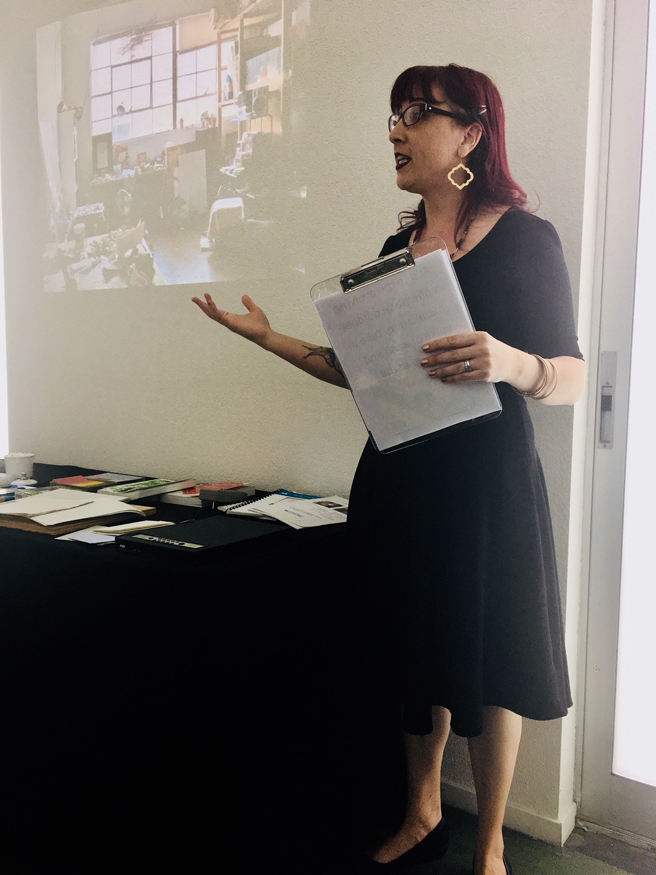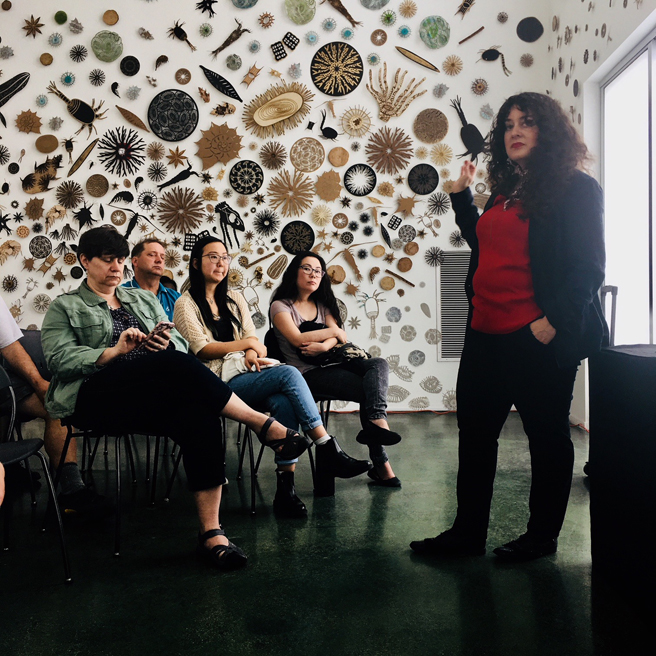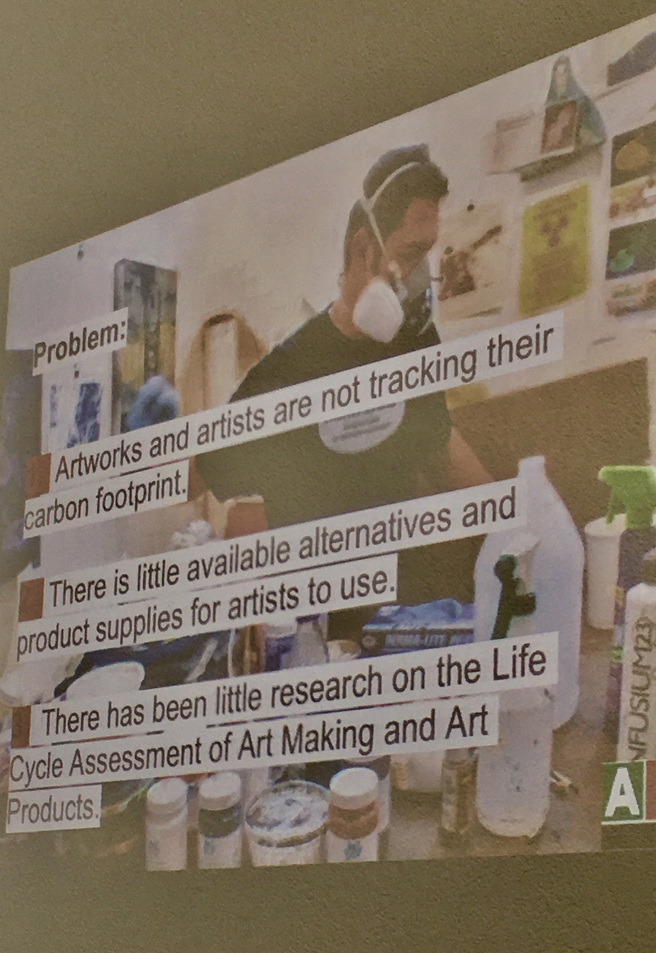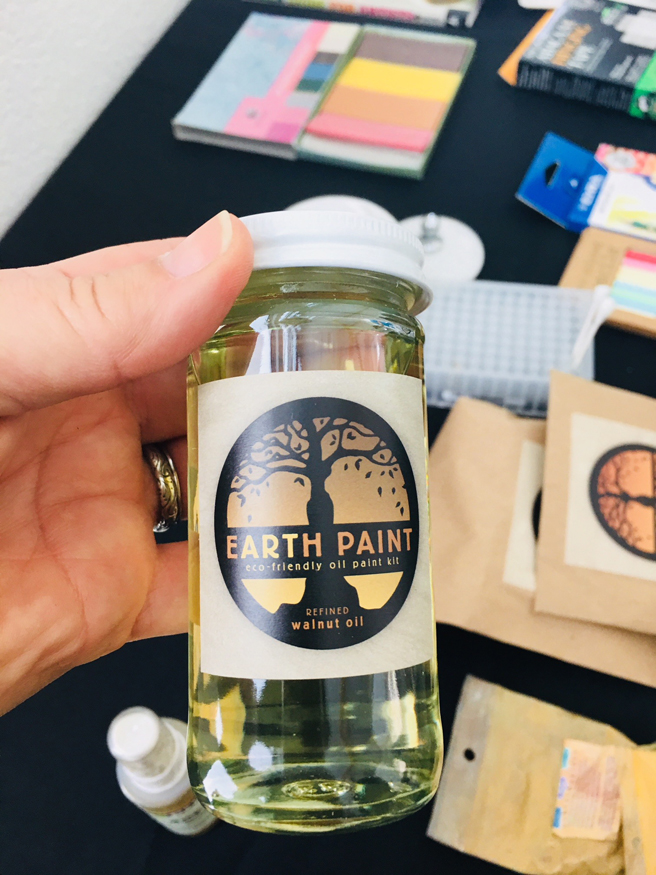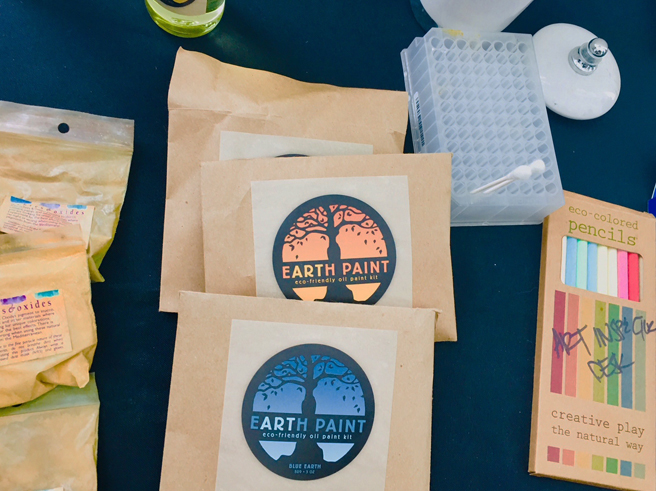Shannon Amidon, the curator of Arousing Biophilia invited the Art Inspector, Danielle Siembieda, to give a very interesting presentation, Saving the Earth by Changing Art at Art Ark in San Jose yesterday. She spoke about how we should be cognisant of our own carbon footprint in the art world. “We” meaning everyone from hobbyists, manufactures, retailers, artists, teachers, institutions, curators, museums, conservators, collectors as well as government and non-governmental organizations.
There is so much to look at! We need to make sure we are protecting our own health, from the materials we choose to use (selecting the least toxic options and lobbying for them were they not exist) and employing best practices in handling materials, (gloves, masks, good ventilation and proper disposal). By exploring alternative approaches we may find materials and methods that better serve our health and environment while still achieving our art making goals.
A “Life Cycle Assessment” can be a good way to help determine how you can lessen your carbon footprint as an artist….this entails examining all the stages of the life of your art from inspiration, planning, material choices, experimentation, prototypes, by-product waste, longevity of tools, longevity of finished pieces, shipping, storing, disposal and so much more…. I never thought to consider these things individually and the Art Inspector and the gathered audience offered many varied examples at attempts to address some of these challenges.
Check out the Art Inspector’s website, artinspector.org for some great advice and links!
She also recommended Moanna Razool’s book, The Artist’s Complete Health and Safety Guide.
Art Ark director, Genevieve Hastings in conversation with Art Inspector, Danielle Siembieda.
Shannon Amidon, curator of Arousing Biophilia, Introducing Danielle Siembieda.
Art Inspector, Danielle Siembieda and audience in front of Michele Guieu’s Plankton installation, made of recycled, recyclable, or salvaged paper cardboard and wood.
Art Inspector slide.
Some examples of environmentally safer art materials.
I’m mulling over various ideas about art making. Traditionally there has been an emphasis on using the best archival materials to produce work that would not only be beautiful but stable and long lasting, something that was museum quality, a good investment. However, as artist began exploring non-archival materials like house paint, tar, collaged elements, with less stable properties, their long term viability unknown, yet this did not seem to affect their collectability in hot art markets. Ephemeral works, like videos and installations and performance art fly in the face of the value of permanence.
Do you have tips, products or ideas to add?


